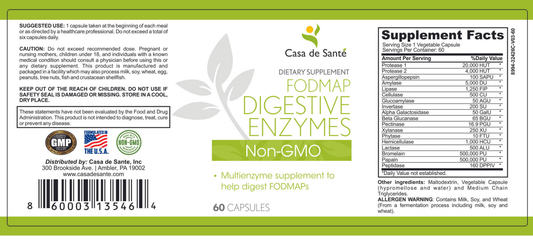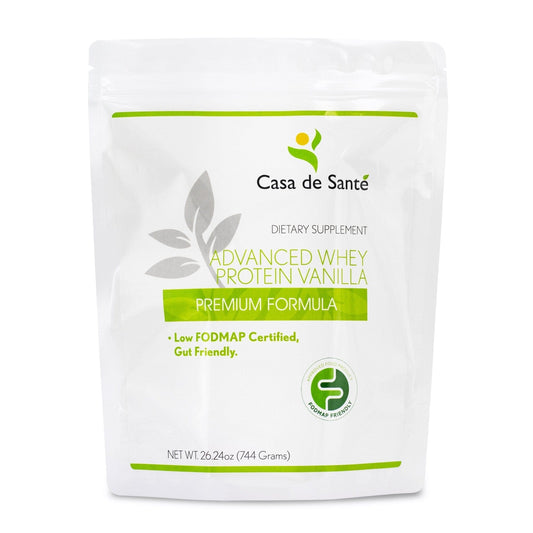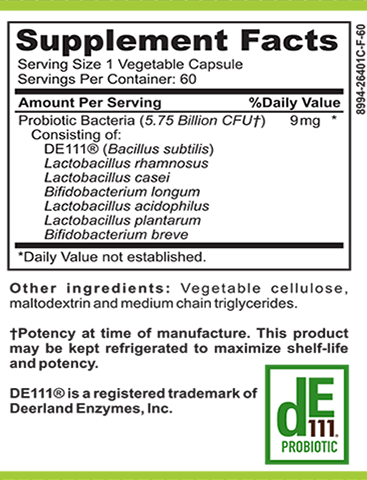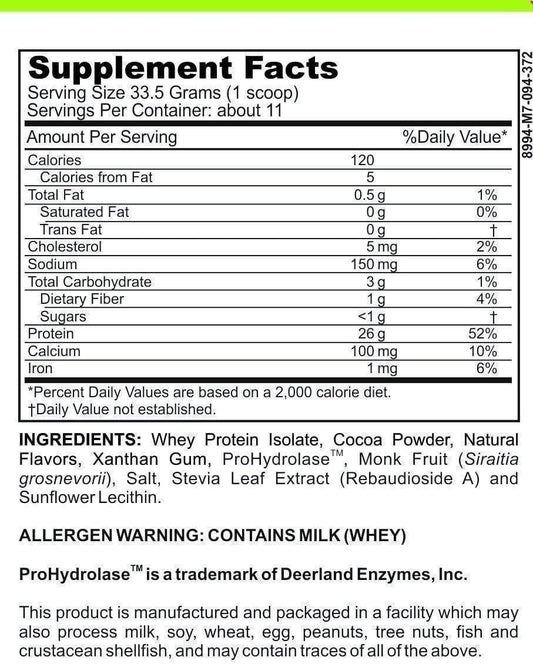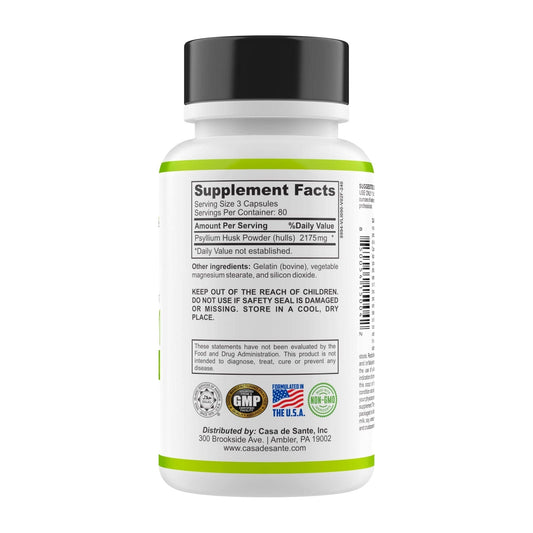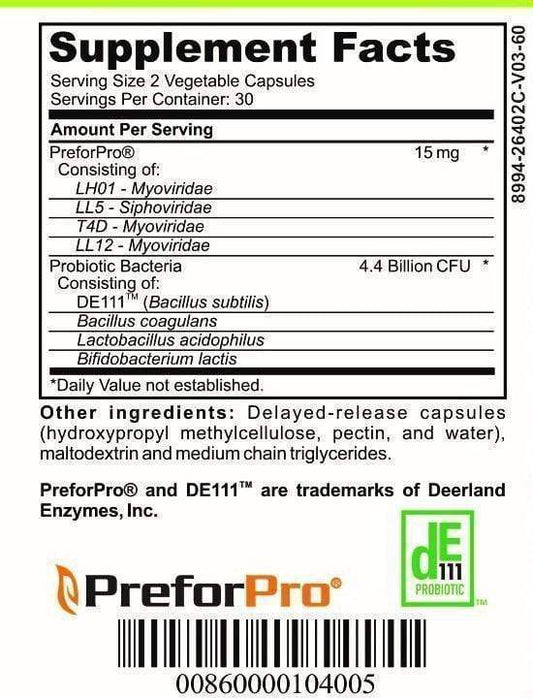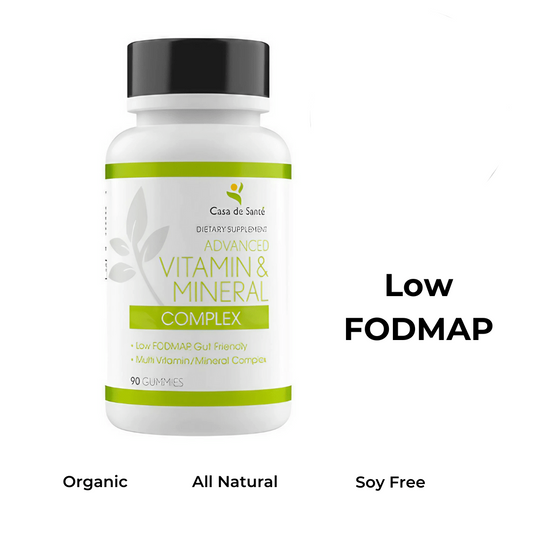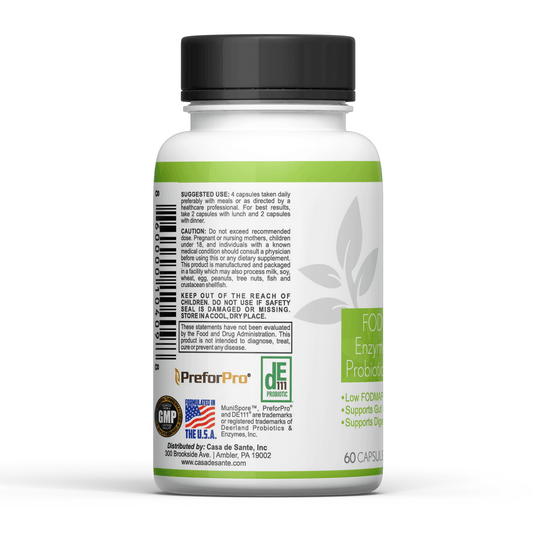Is Glyceryl Monostearate Low FODMAP
Glyceryl monostearate is a commonly used food additive that has a wide range of applications. If you follow a low FODMAP diet, you may be wondering whether glyceryl monostearate is safe to consume. In this article, we will explore the properties of glyceryl monostearate and its potential impact on individuals following a low FODMAP diet.
Understanding Glyceryl Monostearate
Glyceryl monostearate is a naturally occurring compound that is derived from stearic acid, a saturated fatty acid. It is commonly used as an emulsifier and stabilizer in various food products, such as baked goods, dairy products, and spreads. Its purpose is to improve texture, prevent separation, and enhance the overall stability of these products.
But what exactly is glyceryl monostearate? Let's dive deeper into its composition and properties.
What is Glyceryl Monostearate?
Glyceryl monostearate is a type of glycerol ester, which means it is made up of glycerol and stearic acid. Glycerol, also known as glycerin, is a colorless and odorless liquid that is commonly used in the food and pharmaceutical industries. Stearic acid, on the other hand, is a saturated fatty acid that is found in various animal and vegetable fats.
When glycerol and stearic acid combine, they form glyceryl monostearate, a white, waxy solid that is odorless and tasteless. Its chemical formula is C21H42O4. Due to its structure, glyceryl monostearate has both hydrophilic (water-loving) and hydrophobic (water-repelling) properties, which make it an effective emulsifier.
The hydrophilic part of glyceryl monostearate is attracted to water molecules, while the hydrophobic part repels water. This unique property allows glyceryl monostearate to create stable emulsions, where oil and water are blended together evenly, preventing separation.
Common Uses of Glyceryl Monostearate
Glyceryl monostearate is a versatile ingredient that is widely used in the food industry. Its emulsifying and stabilizing properties make it an essential component in many food products. Let's explore some of its common applications:
- Baked goods: In the world of baking, glyceryl monostearate plays a crucial role in creating a soft, tender texture in bread, cakes, and other baked goods. It helps to improve the overall quality and mouthfeel of these treats, making them more enjoyable to eat.
- Dairy products: When it comes to dairy products, glyceryl monostearate is a true game-changer. It is used to prevent ice crystals from forming in ice cream, ensuring a smooth and creamy texture. Additionally, it helps to improve the texture of yogurt and other dairy-based products, giving them a velvety consistency that consumers love.
- Spreads: Have you ever wondered why your peanut butter or margarine doesn't separate into a greasy mess? Well, you can thank glyceryl monostearate for that. This incredible compound helps to prevent oil separation in spreads, keeping them perfectly blended and easy to spread on your favorite bread or toast.
These are just a few examples of how glyceryl monostearate is used in the food industry. Its ability to stabilize and enhance the texture of various products makes it a valuable ingredient for food manufacturers.
Next time you enjoy a soft slice of cake, a creamy spoonful of ice cream, or a perfectly spreadable dollop of peanut butter, remember that glyceryl monostearate is working behind the scenes to make these culinary delights possible.
The Low FODMAP Diet
The low FODMAP diet is a dietary approach that is commonly used to manage symptoms of irritable bowel syndrome (IBS). FODMAPs, which stands for Fermentable Oligosaccharides, Disaccharides, Monosaccharides, and Polyols, are a group of carbohydrates that are poorly absorbed in the small intestine and can cause digestive symptoms, such as bloating, gas, and diarrhea, in sensitive individuals. Following a low FODMAP diet involves avoiding or limiting foods that are high in FODMAPs.
When it comes to managing IBS symptoms, the low FODMAP diet has gained significant attention and popularity. It offers a structured approach to identifying and eliminating potential triggers, providing relief to those who have been struggling with digestive discomfort.
Basics of the Low FODMAP Diet
The low FODMAP diet is divided into three phases: elimination, reintroduction, and maintenance. Each phase plays a crucial role in understanding individual tolerance and creating a personalized diet plan.
The Elimination Phase: During this phase, high FODMAP foods are restricted for a certain period of time, usually around 2-6 weeks. By eliminating these potential triggers, individuals can experience a reduction in symptoms and gain a clearer understanding of their body's response to FODMAPs.
The Reintroduction Phase: After the elimination phase, specific FODMAPs are gradually reintroduced into the diet, one at a time. This allows individuals to identify which FODMAPs trigger their symptoms and determine their personal tolerance levels. It is important to note that not all FODMAPs will cause symptoms in everyone, and this phase helps to create a customized diet plan based on individual sensitivities.
The Maintenance Phase: In this phase, the diet is personalized to include a wide variety of foods while avoiding specific high FODMAP triggers. By tailoring the diet to individual needs, individuals can enjoy a balanced and nutritious eating plan that minimizes symptoms and supports overall gut health.
Benefits of a Low FODMAP Diet
Research has shown that a low FODMAP diet can be an effective strategy for managing symptoms of IBS. It has been found to significantly reduce symptoms such as bloating, abdominal pain, and flatulence in individuals with IBS. By identifying and avoiding high FODMAP triggers, individuals can regain control over their digestive health and improve their quality of life.
Moreover, the low FODMAP diet is not just limited to IBS management. It has also shown promise in helping individuals with other gastrointestinal conditions, such as inflammatory bowel disease (IBD) and small intestinal bacterial overgrowth (SIBO). This broader application highlights the potential benefits of the low FODMAP diet beyond just IBS.
Additionally, the low FODMAP diet encourages a focus on whole, unprocessed foods, which can have a positive impact on overall health. By emphasizing fruits, vegetables, lean proteins, and healthy fats, individuals can improve their nutrient intake and support their overall well-being.
It is important to note that the low FODMAP diet is not meant to be a long-term solution. Once trigger foods have been identified, it is recommended to reintroduce as many FODMAPs as possible to maintain a diverse and balanced diet. Consulting with a registered dietitian who specializes in the low FODMAP diet can provide guidance and support throughout the process.
Glyceryl Monostearate and FODMAPs
Now, let's delve into the key question: Is glyceryl monostearate low FODMAP? While glyceryl monostearate is derived from a fatty acid, it does not contain carbohydrates and is therefore not considered a FODMAP compound. As a result, it is generally regarded as safe for individuals following a low FODMAP diet.
The FODMAP Content in Glyceryl Monostearate
Glyceryl monostearate does not contain any FODMAPs. This means that it does not contribute to the total FODMAP load in a person's diet. It is important to note that the low FODMAP diet focuses primarily on carbohydrates rather than fats, making glyceryl monostearate an acceptable ingredient for individuals adhering to this dietary approach.
How Glyceryl Monostearate Affects Digestion
Glyceryl monostearate is primarily used as an emulsifier and stabilizer in food products and does not directly affect digestion. Its role is to improve the texture and stability of foods by keeping the ingredients properly mixed. As a fat-based compound, it is broken down and digested similarly to other dietary fats, providing energy to the body.
When it comes to the role of glyceryl monostearate in food products, it is worth mentioning that it is commonly found in various processed foods. These include baked goods, dairy products, and even some beverages. Its ability to enhance the texture and stability of these products makes it a popular ingredient in the food industry.
Furthermore, glyceryl monostearate is known for its versatility. It can be used in both oil-in-water and water-in-oil emulsions, making it suitable for a wide range of food applications. This versatility allows manufacturers to create products with different consistencies and textures, catering to the preferences of consumers.
Another interesting aspect of glyceryl monostearate is its potential health benefits. While it is primarily used as a food additive, studies have shown that it may have antioxidant properties. Antioxidants help protect the body against oxidative stress, which is linked to various chronic diseases. However, more research is needed to fully understand the extent of these potential health benefits.
Moreover, glyceryl monostearate is not only used in the food industry but also finds applications in the pharmaceutical and cosmetic industries. In pharmaceuticals, it is used as a lubricant and binder in tablet formulations. In cosmetics, it is used as an emulsifier and thickening agent in creams and lotions.
In conclusion, glyceryl monostearate is a versatile compound that plays a crucial role in the food, pharmaceutical, and cosmetic industries. While it does not contain any FODMAPs and is safe for individuals following a low FODMAP diet, its primary function is to improve the texture and stability of food products. Additionally, it may have potential health benefits due to its antioxidant properties.
Incorporating Glyceryl Monostearate into a Low FODMAP Diet
If you are following a low FODMAP diet, you can safely incorporate glyceryl monostearate into your meals and snacks. However, it is essential to consider other ingredients in the food products you consume, as they may contain high FODMAP components. Here are a few key considerations when incorporating glyceryl monostearate into a low FODMAP diet:
Safe Consumption Levels of Glyceryl Monostearate
Glyceryl monostearate is considered safe for consumption in small amounts. The Food and Drug Administration (FDA) has classified it as Generally Recognized as Safe (GRAS) for use in food products. However, as with any ingredient, it is recommended to consume it in moderation and follow the recommended serving sizes.
Alternatives to Glyceryl Monostearate in a Low FODMAP Diet
If you prefer to avoid glyceryl monostearate for personal reasons or have a known allergy or intolerance to it, there are alternative ingredients that can serve similar purposes. Some alternatives to consider include:
- Lecithin: Derived from soy or sunflower, lecithin is another commonly used emulsifier that can provide similar functionalities to glyceryl monostearate.
- Xanthan gum: This natural thickening agent and stabilizer can be used as an alternative to glyceryl monostearate in certain applications.
- Guar gum: Derived from the guar plant, guar gum is a versatile ingredient that can act as an emulsifier and stabilizer in various food products.
Final Thoughts on Glyceryl Monostearate and FODMAPs
In conclusion, glyceryl monostearate is not a FODMAP compound and is generally considered safe for individuals following a low FODMAP diet. It is widely used as an emulsifier and stabilizer in foods and does not directly impact digestion. However, as with any dietary decision, it is important to consider your individual needs and consult with a healthcare professional or registered dietitian before making significant changes to your diet.
Expert Opinions on Glyceryl Monostearate and FODMAPs
Registered dietitians and healthcare professionals are valuable resources when it comes to making informed dietary choices. If you have any specific questions or concerns about glyceryl monostearate and its impact on a low FODMAP diet, it is recommended to seek guidance from these experts. They can provide individualized advice based on your unique needs and help you navigate any dietary restrictions you may have.
Making Informed Dietary Choices
Ultimately, the decision to incorporate or exclude glyceryl monostearate from your low FODMAP diet should be based on your own personal preferences and health goals. By staying informed and understanding the properties of different food additives, you can make empowered choices that support your digestive well-being and overall health.


